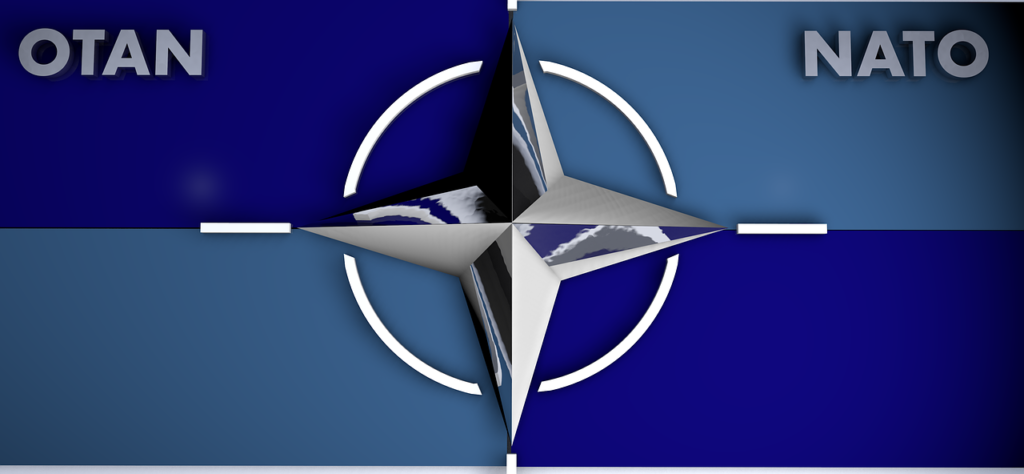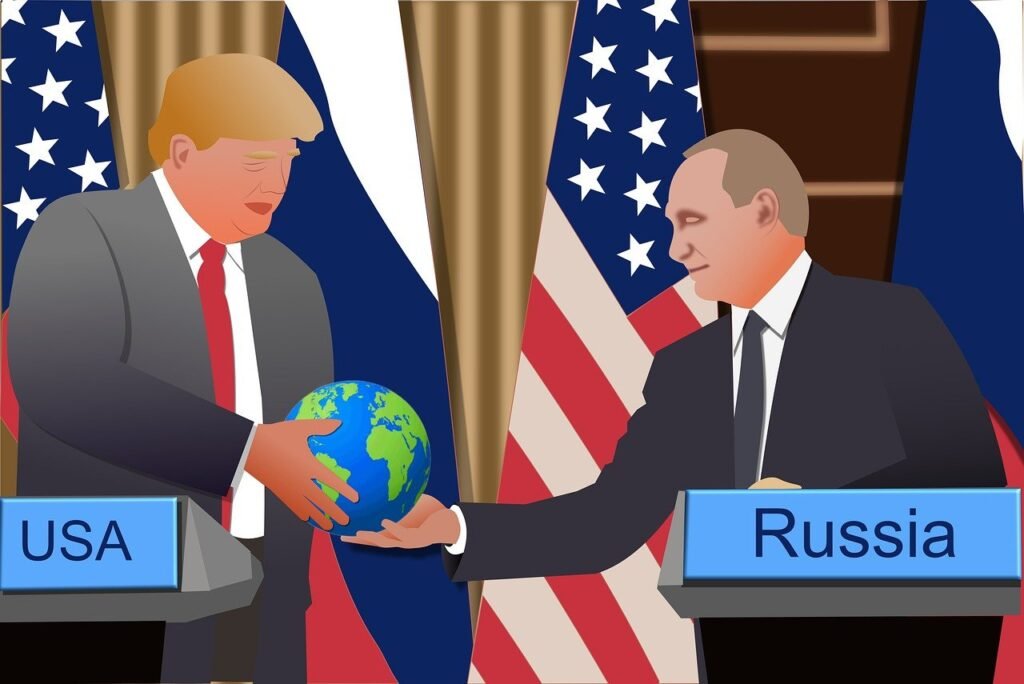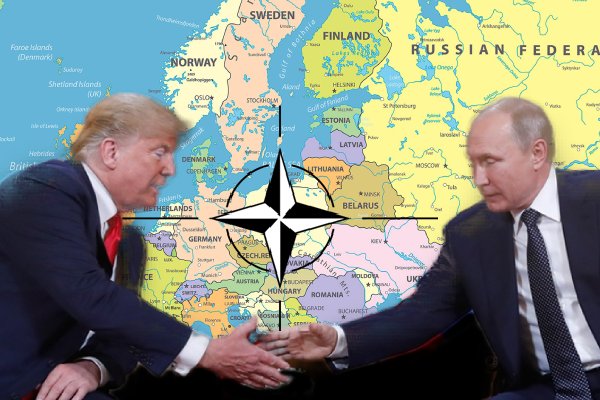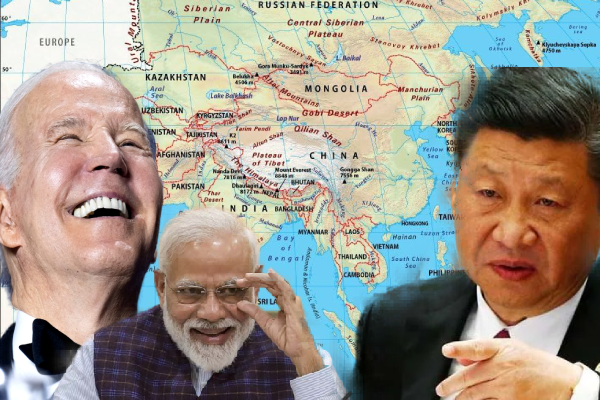During the first term of Donald Trump as the US president, disagreements emerged between him and NATO members due to his dissatisfaction with their contributions to the alliance’s defence budget. Recently, during a rally in South Carolina, Trump reiterated his disapproval of NATO members. Trump shared his conversation with an unidentified NATO member, he warned that he would encourage Russia to do whatever the hell they want to delinquent countries.
In this blog, we will dwell on Trump’s policies towards NATO, his admiration for Putin and what if NATO is disbanded?
NATO Policy in the reign of Trump

- Origins of Trump’s NATO Scepticism:
To understand Trump’s NATO policies, one must first examine the roots of his scepticism towards the alliance. During his 2016 presidential campaign, Trump repeatedly criticized NATO members for not meeting their defence spending commitments, arguing that the burden was unfairly shouldered by the United States. This sentiment reflected a broader theme of “America First” – an approach emphasizing national interests over global alliances.
- The 2% Defence Spending Target:
One of the central tenets of Trump’s NATO policies was the insistence on NATO member countries meeting the agreed-upon defence spending target of 2% of their GDP. While this target was set during the NATO Summit in Wales in 2014, Trump brought it to the forefront of discussions, often employing strong rhetoric to push allies to increase their contributions. Critics argued that this focus on defence spending overshadowed the broader contributions that NATO members made in terms of military capabilities and operational commitments.
- NATO and the Fight Against Terrorism:
Trump’s tenure saw an evolution in the NATO alliance’s role, particularly in the context of counterterrorism efforts. Despite initial scepticism about NATO’s relevance in combating terrorism, Trump later acknowledged the alliance’s contributions to the fight against ISIS. NATO’s involvement in training missions in Iraq and its commitment to strengthening counterterrorism capabilities marked a shift in the narrative surrounding the alliance’s role in addressing contemporary security challenges.
- The Question of Article 5:
Article 5 of the NATO treaty stipulates that an armed attack against one or more NATO members is considered an attack against all members, and each member will take action to restore and maintain the security of the North Atlantic area. Trump’s approach to Article 5 raised eyebrows when, during his first NATO summit in 2017, he did not explicitly endorse the provision. While he later reaffirmed his commitment to Article 5, the initial ambiguity generated concerns among NATO allies about the United States’ unwavering dedication to collective defence.
- Unilateral Decision-Making and Diplomatic Tensions:
Trump’s leadership style, characterized by a penchant for unilateral decision-making and unconventional diplomacy, had a significant impact on NATO relations. The abrupt announcements of troop withdrawals from Syria and Afghanistan, without prior consultation with NATO allies, underscored a communication gap and raised questions about the alliance’s cohesion. Additionally, public spats and disputes over trade agreements further strained transatlantic relations, prompting concerns about the longevity of the alliance under Trump’s leadership.
- NATO Enlargement and Relations with Russia:
Trump’s approach to NATO enlargement and its relationship with Russia was a complex and often contradictory aspect of his policies. While advocating for an expanded NATO membership, Trump simultaneously sought to improve relations with Russia. This duality created tensions within the alliance, as some members were wary of compromising NATO’s unity and credibility by pursuing closer ties with Moscow.
- The Legacy of Trump’s NATO Policies:
As Trump’s term came to an end in 2021, it became evident that his NATO policies had left a lasting impact on the alliance. While some argued that his emphasis on burden-sharing prompted necessary reforms within NATO, others contended that the confrontational rhetoric and unilateral decision-making eroded trust and cohesion among member states.
Trump admires Putin

- Personal Rhetoric and Statements:
- Trump’s public statements often conveyed a conciliatory tone towards Russian President Vladimir Putin. He occasionally praised Putin’s leadership style and expressed a desire for better relations between the United States and Russia.
- Questionable Diplomatic Choices:
- Trump’s choices for key diplomatic positions raised concerns. For instance, his initial National Security Advisor, Michael Flynn, had close ties to Russia. Additionally, Trump’s first Secretary of State, Rex Tillerson, had received the Order of Friendship from Putin, which led to scepticism about the administration’s approach to Russia.
- Reluctance to Criticize Russia:
- Trump was often criticized for hesitating to publicly condemn Russia for actions such as interference in the 2016 U.S. elections, the poisoning of a former Russian spy in the UK, and human rights abuses. Critics argued that his reluctance to confront Russia publicly signalled a lack of willingness to hold the country accountable for its actions.
- Attempts to Ease Sanctions:
- Trump’s administration faced scrutiny for its efforts to ease sanctions on Russia. For example, there were reports of discussions about lifting sanctions related to Russia’s annexation of Crimea. These attempts were met with resistance from Congress and raised questions about the administration’s commitment to a tough stance on Russia.
- Mixed Signals on NATO:
- Trump’s statements regarding NATO were sometimes inconsistent. While he did express support for the alliance, his criticisms of NATO’s financial burden-sharing and occasional questioning of the alliance’s purpose generated uncertainty about the U.S. commitment to collective defence, potentially providing an opening for Russian influence.
- Investigations into Russian Interference:
- The investigations into Russian interference in the 2016 U.S. elections, such as the Mueller Report, did not conclusively establish collusion between the Trump campaign and Russia. However, the investigations themselves contributed to an atmosphere of suspicion and added to the perception that Trump might be hesitant to confront Russia.
What if NATO is Disbanded?
The disbandment of the North Atlantic Treaty Organization (NATO) would have profound implications for international security, reshaping geopolitical dynamics and altering the landscape of global alliances. Established in 1949, NATO has been a cornerstone of transatlantic cooperation, providing a unified front for its member countries in addressing common security challenges. If such a scenario were to unfold, several significant consequences would likely follow.
Foremost among these consequences is the creation of a security vacuum. NATO serves as a collective defense mechanism, ensuring the security and stability of its member states. The dissolution of the alliance could leave member countries exposed to external threats, with no unified strategy or coordinated response. This could embolden nations with expansionist ambitions, potentially leading to increased regional tensions and conflicts.
Without the protective umbrella of NATO, member countries might find themselves compelled to bolster their individual defense capabilities. This could result in a surge in national defense spending as nations seek to fill the void left by the alliance. The absence of a collective defense strategy might lead to a more fragmented approach to security, with each country prioritizing its own interests and defense priorities.
The disbandment of NATO would also prompt a reevaluation of alliances and partnerships. Member countries, now without the NATO framework, might seek new alliances based on regional or global interests. This could result in a realignment of geopolitical dynamics, with nations forming new cooperative relationships to address their security concerns.
Europe, in particular, could experience significant changes in its security landscape. NATO has played a pivotal role in maintaining stability on the continent since the end of World War II. Its dissolution might impact relationships between European nations and their neighbors, potentially leading to shifts in regional power dynamics.
The potential for an increase in regional conflicts cannot be overlooked. In the absence of a robust and unified defense alliance, countries may feel less constrained in pursuing their geopolitical objectives. This could result in heightened instability in various regions as nations assert their interests without the moderating influence of a collective security agreement.
Furthermore, the disbandment of NATO could strain transatlantic relations. The alliance has long been a symbol of cooperation between North American and European countries, with the United States playing a central role. The absence of NATO could lead to a deterioration in diplomatic, economic, and security ties between these regions, affecting the broader framework of Western collaboration.
Beyond regional implications, the global balance of power could also be affected. NATO has represented a formidable force, shaping the perception of strength and influence for Western democracies. The dissolution of the alliance might create opportunities for other nations to assert themselves on the global stage, potentially altering the dynamics of international relations.

